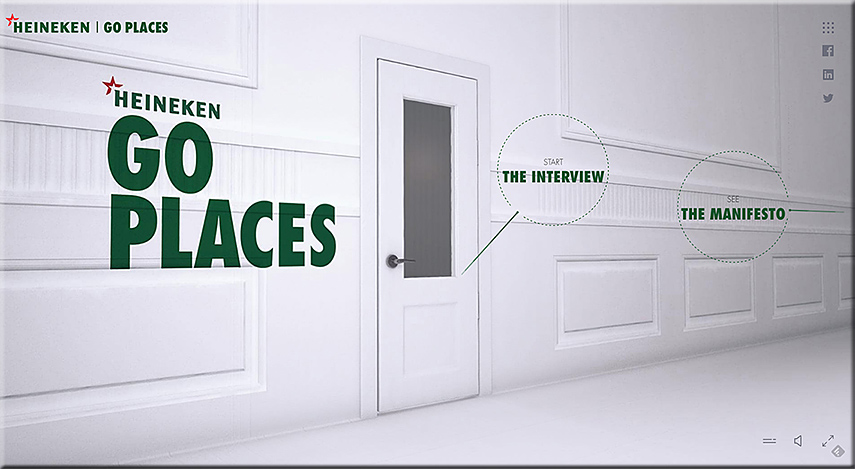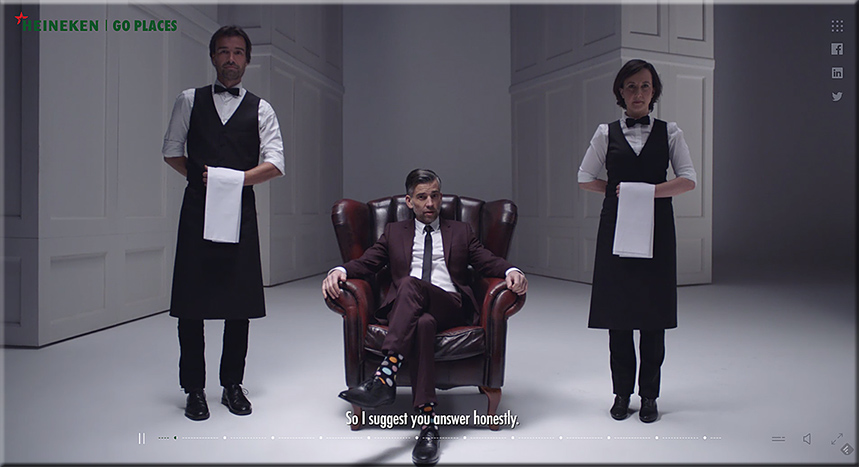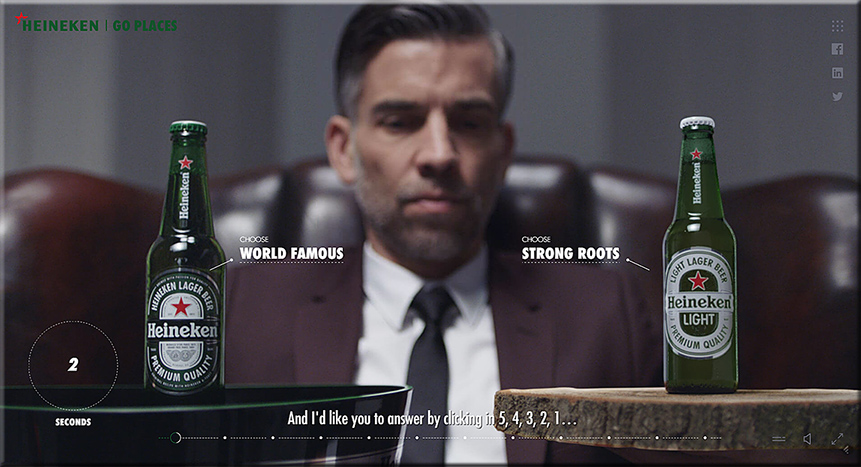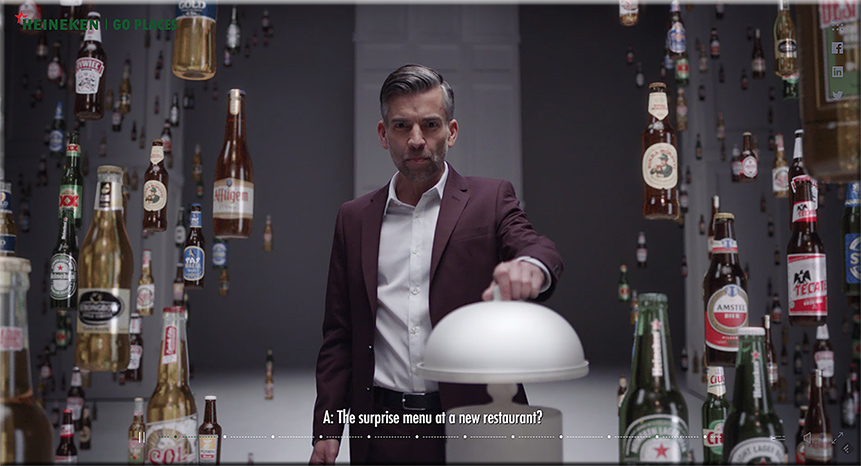Some excerpts of this infographic:




11 Ed Tech Trends to Watch in 2017 — from campustechnology.com by Rhea Kelly — with Susan Aldridge, Gerard Au, myself, Marci Powell, & Phil Ventimiglia
Five higher ed leaders analyze the hottest trends in education technology this year.
From DSC:
I greatly enjoyed this project and appreciated being able to work with Rhea, Susan, Gerard, Marci, and Phil.
From DSC:
Don’t discount the game-changing power of the morphing “TV” when coupled with artificial intelligence (AI), natural language processing (NLP), and blockchain-based technologies!
When I saw the article below, I couldn’t help but wonder what (we currently know of as) “TVs” will morph into and what functionalities they will be able to provide to us in the not-too-distant future…?
For example, the article mentions that Seiki, Westinghouse, and Element will be offering TVs that can not only access Alexa — a personal assistant from Amazon which uses artificial intelligence — but will also be able to provide access to over 7,000 apps and games via the Amazon Fire TV Store.

Some of the questions that come to my mind:
Forget a streaming stick: These 4K TVs come with Amazon Fire TV inside — from techradar.com by Nick Pino
Excerpt:
The TVs will not only have access to Alexa via a microphone-equipped remote but, more importantly, will have access to the over 7,000 apps and games available on the Amazon Fire TV Store – a huge boon considering that most of these Smart TVs usually include, at max, a few dozen apps.

![The Living [Class] Room -- by Daniel Christian -- July 2012 -- a second device used in conjunction with a Smart/Connected TV](http://danielschristian.com/learning-ecosystems/wp-content/uploads/2012/07/The-Living-Class-Room-Daniel-S-Christian-July-2012.jpg)
Addendums
“I’ve been predicting that by 2030 the largest company on the internet is going to be an education-based company that we haven’t heard of yet,” Frey, the senior futurist at the DaVinci Institute think tank, tells Business Insider.
.
A school bus, virtual reality, & an out-of-this-world journey — from goodmenproject.com
“Field Trip To Mars” is the barrier-shattering outcome of an ambitious mission to give a busload of people the same, Virtual Reality experience – going to Mars.
Excerpt:
Inspiration was Lockheed‘s goal when it asked its creative resources, led by McCann, to create the world’s first mobile group Virtual Reality experience. As one creator notes, VR now is essentially a private, isolating experience. But wouldn’t it be cool to give a busload of people the same, simultaneous VR experience? And then – just to make it really challenging – put the whole thing on wheels?
“Field Trip To Mars” is the barrier-shattering outcome of this ambitious mission.
From DSC:
This is incredible! Very well done. The visual experience tracks the corresponding speeds of the bus and even turns of the bus.
Ed Dept. Launches $680,000 Augmented and Virtual Reality Challenge — from thejournal.com by David Nagel
Excerpt:
The United States Department of Education (ED) has formally kicked off a new competition designed to encourage the development of virtual and augmented reality concepts for education.
Dubbed the EdSim Challenge, the competition is aimed squarely at developing students’ career and technical skills — it’s funded through the Carl D. Perkins Career and Technical Education Act of 2006 — and calls on developers and ed tech organizations to develop concepts for “computer-generated virtual and augmented reality educational experiences that combine existing and future technologies with skill-building content and assessment. Collaboration is encouraged among the developer community to make aspects of simulations available through open source licenses and low-cost shareable components. ED is most interested in simulations that pair the engagement of commercial games with educational content that transfers academic, technical, and employability skills.”
Virtual reality boosts students’ results — from raconteur.net by Edwin Smith
Virtual and augmented reality can enable teaching and training in situations which would otherwise be too hazardous, costly or even impossible in the real world
Excerpt:
More recently, though, the concept described in Aristotle’s Nicomachean Ethics has been bolstered by further scientific evidence. Last year, a University of Chicago study found that students who physically experience scientific concepts, such as the angular momentum acting on a bicycle wheel spinning on an axel that they’re holding, understand them more deeply and also achieve significantly improved scores in tests.

Virtual and augmented reality are shaking up sectors — from raconteur.net by Sophie Charara
Both virtual and augmented reality have huge potential to leap from visual entertainment to transform the industrial and service sectors
Microsoft’s HoloLens could power tanks on a battlefield — from theverge.com by Tom Warren
Excerpt:
Microsoft might not have envisioned its HoloLens headset as a war helmet, but that’s not stopping Ukrainian company LimpidArmor from experimenting. Defence Blog reports that LimpidArmor has started testing military equipment that includes a helmet with Microsoft’s HoloLens headset integrated into it.
The helmet is designed for tank commanders to use alongside a Circular Review System (CRS) of cameras located on the sides of armored vehicles. Microsoft’s HoloLens gathers feeds from the cameras outside to display them in the headset as a full 360-degree view. The system even includes automatic target tracking, and the ability to highlight enemy and allied soldiers and positions.
Bring your VR to work — from itproportal.com by Timo Elliott, Josh Waddell 4 hours ago
With all the hype, there’s surprisingly little discussion of the latent business value which VR and AR offer.
Excerpt:
With all the hype, there’s surprisingly little discussion of the latent business value which VR and AR offer — and that’s a blind spot that companies and CIOs can’t afford to have. It hasn’t been that long since consumer demand for the iPhone and iPad forced companies, grumbling all the way, into finding business cases for them. Gartner has said that the next five to ten years will bring “transparently immersive experiences” to the workplace. They believe this will introduce “more transparency between people, businesses, and things” and help make technology “more adaptive, contextual, and fluid.”
If digitally enhanced reality generates even half as much consumer enthusiasm as smartphones and tablets, you can expect to see a new wave of consumerisation of IT as employees who have embraced VR and AR at home insist on bringing it to the workplace. This wave of consumerisation could have an even greater impact than the last one. Rather than risk being blindsided for a second time, organisations would be well advised to take a proactive approach and be ready with potential business uses for VR and AR technologies by the time they invade the enterprise.
In Gartner’s latest emerging technologies hype cycle, Virtual Reality is already on the Slope of Enlightenment, with Augmented Reality following closely.
VR’s higher-ed adoption starts with student creation — from edsurge.com by George Lorenzo
Excerpt:
One place where students are literally immersed in VR is at Carnegie Mellon University’s Entertainment Technology Center (ETC). ETC offers a two-year Master of Entertainment Technology program (MET) launched in 1998 and cofounded by the late Randy Pausch, author of “The Last Lecture.”
MET starts with an intense boot camp called the “immersion semester” in which students take a Building Virtual Worlds (BVW) course, a leadership course, along with courses in improvisational acting, and visual storytelling. Pioneered by Pausch, BVW challenges students in small teams to create virtual reality worlds quickly over a period of two weeks, culminating in a presentation festival every December.
Apple patents augmented reality mapping system for iPhone — from appleinsider.com by Mikey Campbell
Apple on Tuesday was granted a patent detailing an augmented reality mapping system that harnesses iPhone hardware to overlay visual enhancements onto live video, lending credence to recent rumors suggesting the company plans to implement an iOS-based AR strategy in the near future.
A bug in the matrix: virtual reality will change our lives. But will it also harm us? — from theguardian.stfi.re
Prejudice, harassment and hate speech have crept from the real world into the digital realm. For virtual reality to succeed, it will have to tackle this from the start
The latest Disney Research innovation lets you feel the rain in virtual reality — from haptic.al by Deniz Ergurel
Excerpt:
Virtual reality is a combination of life-like images, effects and sounds that creates an imaginary world in front of our eyes.
But what if we could also imitate more complex sensations like the feeling of falling rain, a beating heart or a cat walking? What if we could distinguish, between a light sprinkle and a heavy downpour in a virtual experience?
Disney Research?—?a network of research laboratories supporting The Walt Disney Company, has announced the development of a 360-degree virtual reality application offering a library of feel effects and full body sensations.
Literature class meets virtual reality — from blog.cospaces.io by Susanne Krause
Not every student finds it easy to let a novel come to life in their imagination. Could virtual reality help? Tiffany Capers gave it a try: She let her 7th graders build settings from Lois Lowry’s “The Giver” with CoSpaces and explore them in virtual reality. And: they loved it.
James Bay students learn Cree syllabics in virtual reality — from cbc.ca by Celina Wapachee and Jaime Little
New program teaches syllabics inside immersive world, with friendly dogs and archery
VRMark will tell you if your PC is ready for Virtual Reality — from engadget.com by Sean Buckley
Benchmark before you buy.
Forbidden City Brings Archaeology to Life With Virtual Reality — from wsj.com
Will virtual reality change the way I see history? — from bbc.co.uk
Scientists can now explore cells in virtual reality — from mashable.com by Ariel Bogle
Excerpt:
After generations of peering into a microscope to examine cells, scientists could simply stroll straight through one.
Calling his project the “stuff of science fiction,” director of the 3D Visualisation Aesthetics Lab at the University of New South Wales (UNSW) John McGhee is letting people come face-to-face with a breast cancer cell.

Can Virtual Reality Make Us Care More? — from huffingtonpost.co.uk by Alex Handy
Excerpt:
In contrast, VR has been described as the “ultimate empathy machine.” It gives us a way to virtually put us in someone else’s shoes and experience the world the way they do.
Stanford researchers release virtual reality simulation that transports users to ocean of the future — from news.stanford.edu by Rob Jordan
Free science education software, available to anyone with virtual reality gear, holds promise for spreading awareness and inspiring action on the pressing issue of ocean acidification.
The High-end VR Room of the Future Looks Like This — from uploadvr.com by Sarah Downey
Excerpt:
This isn’t meant to be an exhaustive list, but if I missed something major, please tell me and I’ll add it. Also, please reach out if you’re working on anything cool in this space à sarah(at)accomplice(dot)co.
Hand and finger tracking, gesture interfaces, and grip simulation:
AR and VR viewers:
Omnidirectional treadmills:
Haptic feedback bodysuits:
Brain-computer interfaces:
Neural plugins:
3D tracking, capture, and/or rendering:
Eye tracking:
VR audio:
Scent creation:
Top 200 Tools for Learning 2016: Overview — from c4lpt.co.uk by Jane Hart
Also see Jane’s:
Also see Jane’s “Best of Breed 2016” where she breaks things down into:
Jane’s Top 10 Tools for Learning 2016 — from c4lpt.co.uk by Jane Hart
Excerpt:
On Friday 23rd September, voting closes in the 10th Annual Survey of Learning Tool – so it’s not too late to vote!
You can find out how to do so HERE – essentially it involves sharing your own Top 10 Tools for Learning – privately or publicly.
Anyway, as we reach the final few days of voting in 2016, I thought it was time to share my personal top 10 tools – so here they are:
Also see:
From DSC:
Interactive video — a potentially very powerful medium to use, especially for blended and online-based courses or training-related materials! This interactive piece from Heineken is very well done, even remembering how you answered and coming up with their evaluation of you from their 12-question “interview.”
But notice again, a TEAM of specialists are needed to create such a piece. Neither a faculty member, a trainer, nor an instructional designer can do something like this all on their own. Some of the positions I could imagine here are:
This is the kind of work that I wish we saw more of in the world of online and blended courses! Also, I appreciated their use of humor. Overall, a very engaging, fun, and informative piece!
Virtual reality: The hype, the problems and the promise — from bbc.com by Tim Maughan
It’s the technology that is supposed to be 2016’s big thing, but what iteration of VR will actually catch on, and what’s just a fad? Tim Maughan takes an in-depth look.
Excerpt:
For Zec this is one of VR’s most promising potentials – to be able to drop audiences into a situation and force them to react emotionally, in ways that traditional filmmaking or journalism might struggle to do. “We really cannot understand what the people [in Syria and other places] right now are going through, so I thought maybe if we put the viewer inside the shoes of the family, or near them, maybe they can feel more and understand more rather than just reading a headline in a newspaper.”
The aim of Blackout is to challenge assumptions New Yorkers might have about the people around them, by allowing them to tap directly into their thoughts. “You’re given the ability to pick into people’s minds and their motives,” says co-creator Alex Porter. “Through that process you start to realise the ways in which you were wrong about all the people around you, and start to find these kind of exciting stories that they have to tell.”
From DSC:
Virtual Reality could have a significant impact in diversity training. (I don’t like the word diversity too much; as in my experience, everybody in the Fortune 5oo companies where I worked belonged in the realm of diversity except for Christians, but I’ll use it here anyway.)
The point is…when you can put yourself into someone else’s shoes, it could have some positive impact in terms of better being able to relate to what that person is going through.
Star Trek in VR – Why can’t we do this with VR in education? — from digitalbodies.net by Maya Georgieva
Excerpt:
What if there was a new way to start this journey? What if you walked into the room and boarded a starship instead? What would a school experience be like if we sent our students on a mission, joining a global team to learn and solve our world’s most pressing problems? What if they met in Virtual Reality? For example, literally experiencing the streets of Paris if they were studying French culture or urban planning. Examining first hand the geology of volcanoes or building the next generation transportation? What would happen if they are given a problem they could not answer on their own, a problem that requires collaboration and teamwork with colleagues to find a solution?
Here is how VR and AI can empower the future of learning. The Star Trek: Bridge Crew VR Game gives us a glimpse of how we can engage with our students. Or, as Levar Burton (Geordi La Forge from Engineering) in the video trailer puts it:
There is something different being in a shared virtual environment . . . The team does not succeed unless everybody does their job well.
…
In the true spirit of Star Trek it is through cooperation rather than competition that we learn best. In VR, you can sit on any of the crew chairs and be the captain, engineer, or doctor and experience events from very different point of views. In Star Trek: Bridge Crew, you are flying the ship but have to work collaboratively with your team. You have to work with your crew to reach goals and accomplish the mission as this is virtual reality as a social experience. It demands that you be fully engaged.
Not just for gamers: CSU launching Virtual Reality Initiative — from source.colostate.edu by Lauren Klamm
Excerpt:
Think “virtual reality,” and it’s probably video gaming that comes to mind. CSU is looking to expand the breadth and depth of this emerging technical field with a campus-wide Virtual Reality Initiative, launching this semester.
The initiative will give students and the science community hands-on experience with virtual reality, for research and educational applications.
Virtual reality (VR) is a way of experiencing virtual worlds or objects – the cockpit of a spaceship, an anatomy lesson, a walk through a historical building – through devices like computers, goggles or headsets designed to immerse someone in a simulated environment. VR touches fields ranging from design to art to engineering.
VR Learning: How Virtual Reality Will Democratize Learning — from iamvr.co
Excerpt:
In case you haven’t heard, there is a lot of hype right now about virtual and augmented reality. Three months into 2016, investors have already spent 1.1 billion dollars to get a piece of the action.
Still, I am confident that virtual reality will revolutionize how we learn, and the reason is simple. Virtual reality is not just a technology, it’s a medium. And I’ve seen how powerful that medium can be.
Augmented reality has surgical application — from thestack.com by Nicky Cappella
Excerpt:
A Chinese surgeon has discovered a practical application for augmented reality in the medical field. Using the same technology by which a Pokemon character is layered onto a real-life setting, two surgical images can be combined into a single view, eliminating the need for surgeons to watch two separate screens simultaneously.
Catherine Chan Po-ling, a surgeon in Hong Kong and co-founder of MedEXO Robotics, says that the use of augmented reality technology in keyhole, or minimally invasive, surgery can solve one of the biggest problems for surgeons performing these procedures.
Currently, surgeons in keyhole procedures must create and view two images simultaneously. In Chan’s example, when checking for cancerous cells in the liver, the surgeon operates a regular camera showing a view of the surface of the liver, and at the same time operates an ultrasound probe to check beneath the surface of the liver.
Stanford Journalism Program’s Guide to Using Virtual Reality for Storytelling — from storybench.org by Geri Migielicz and Janine Zacharia
Excerpt:
Given the explosion of interest in virtual reality among media organizations, we sought in January to establish best practices and ideal scenarios for using the technology in storytelling through our inaugural immersive journalism class at Stanford University.
During the 10-week course, 12 undergraduate and graduate students evaluated a range of virtual reality experiences published by the New York Times, Wall Street Journal, ABC News and others. We compared commercially available virtual reality headsets (Google Cardboard, HTC Vive, Samsung Gear/VR and Oculus Rift) for ease and quality as well as virtual reality cameras — the (more expensive but expansive) GoPro and the (more affordable) Ricoh Theta S.
12 ways to use Google Cardboard in your class — from ditchthattextbook.com
Excerpt:
Virtual reality used to be the thing of science fiction books and movies. Now, it’s inexpensive, works with the technology we carry in our pockets, and can transform us to real and imaginary places.
These 5 Incredible HoloLens Videos Will Make You A VR/AR Believer — from uploadvr.com
Upload And Make School Graduate Their First Class Of VR Developers — from uploadvr.com
The first truly awesome chatbot is a talking T. Rex — from fastcodesign.com by John Brownlee
National Geographic uses a virtual Tyrannosaur to teach kids about dinosaurs—and succeeds where other chatbots fail.

Excerpt:
As some have declared chatbots to be the “next webpage,” brands have scrambled to develop their own talkative bots, letting you do everything from order a pizza to rewrite your resume. The truth is, though, that a lot of these chatbots are actually quite stupid, and tend to have a hard time understanding natural human language. Sooner or later, users get frustrated bashing their heads up against the wall of a dim-witted bot’s AI.
So how do you design around a chatbot’s walnut-sized brain? If you’re National Geographic Kids UK, you set your chatbot to the task of pretending to be a Tyrannosaurus rex, a Cretaceous-era apex predator that really had a walnut-sized brain (at least comparatively speaking).
She’s called Tina the T. rex, and by making it fun to learn about dinosaurs, she suggests that education — rather than advertising or shopping — might be the real calling of chatbots.
Also relevant/see:
Imagination in the Augmented-Reality Age — from theatlantic.com by Georgia Perry
Pokémon Go may have reached the zenith of its popularity, but the game has far-reaching implications for the future of play.
Excerpt:
For young people today, however, it’s a different story. “They hardly play. If they do play it’s some TV script. Very prescribed,” Levin said. “Even if they have friends over, it’s often playing video games.”
That was before Pokémon Go, though.
The augmented-reality (AR) game that—since its release on July 6, attracted 21 million users and became one of the most successful mobile apps ever—has been praised for promoting exercise, facilitating social interactions, sparking new interest in local landmarks, and more. Education writers and experts have weighed in on its implications for teaching kids everything from social skills to geography to the point that such coverage has become cliché. And while it seems clear at this point that the game is a fad that has peaked—it’s been losing active players for over a week—one of the game’s biggest triumphs has, arguably, been the hope it’s generated about the future of play. While electronic games have traditionally caused kids to retreat to couches, here is one that did precisely the opposite.
What Pokémon Go is, however, is one of the first iterations of what will undeniably be many more AR games. If done right, some say the technology Go introduced to the world could bring back the kind of outdoor, creative, and social forms of play that used to be the mainstay of childhood. Augmented reality, it stands to reason, could revitalize the role of imagination in kids’ learning and development.
In Memory: Seymour Papert — from media.mit.edu; with thanks to Mr. Joe Byerwalter for this resource
Excerpt:
Seymour Papert, whose ideas and inventions transformed how millions of children around the world create and learn, died Sunday, July 31, 2016 at his home in East Blue Hill, Maine. He was 88.
Papert’s career traversed a trio of influential movements: child development, artificial intelligence, and educational technologies. Based on his insights into children’s thinking and learning, Papert recognized that computers could be used not just to deliver information and instruction, but also to empower children to experiment, explore, and express themselves. The central tenet of his Constructionist theory of learning is that people build knowledge most effectively when they are actively engaged in constructing things in the world. As early as 1968, Papert introduced the idea that computer programming and debugging can provide children a way to think about their own thinking and learn about their own learning.
Also see:
“In this particular art class they were all carving soap,” he continued, “but what each student carved came from wherever fancy is bred, and the project was not done and dropped but continued for many weeks. It allowed time to think, to dream, to gaze, to get a new idea and try it and drop it or persist, time to talk, to see other people’s work and their reaction to yours — not unlike mathematics as it is for the mathematician, but quite unlike math as it is in junior high school.”
.
He added, “In the past, education adapted the mind to a very restricted set of available media; in the future, it will adapt media to serve the needs and tastes of each individual mind.”
Take a step inside the classroom of tomorrow — from techradar.com by Nicholas Fearn
Making learning fun

Excerpt:
But the classroom of tomorrow will look very different. The latest advancements in technology and innovation are paving the way for an educational space that’s interactive, engaging and fun.
The conventions of learning are changing. It’s becoming normal for youngsters to use games like Minecraft to develop skills such as team working and problem solving, and for teachers to turn to artificial intelligence to get a better understanding of how their pupils are progressing in lessons.
Virtual reality is also introducing new possibilities in the classroom. Gone are the days of imagining what an Ancient Egyptian tomb might look like – now you can just strap on a headset and transport yourself there in a heartbeat.
The potential for using VR to teach history, geography and other subjects is incredible when you really think about it – and it’s not the only tech that’s going to shake things up.
…
Artificial intelligence is already doing groundbreaking things in areas like robotics, computer science, neuroscience and linguistics, but now they’re now entering the world of education too.
London-based edtech firm Digital Assess has been working on an AI app that has the potential to revolutionise the way youngsters learn.
With the backing of the UK Government, the company has been trialing its web-based application Formative Assess in schools in England.
Using semantic indexing and natural language processing in a similar way to social networking sites, an on-screen avatar – which can be a rubber duck or robot – quizzes students on their knowledge and provides them with individual feedback on their work.
Specialists central to high-quality, engaging online programming — from EvoLLLution.com (where the LLL stands for lifelong learning) by Daniel Christian
Excerpts:
Creating high-quality online courses is getting increasingly complex—requiring an ever-growing set of skills. Faculty members can’t do it all, nor can instructional designers, nor can anyone else. As time goes by, new entrants and alternatives to traditional institutions of higher education will likely continue to appear on the higher education landscape—the ability to compete will be key.
…
For example, will there be a need for the following team members in your not-too-distant future?
From Apple:
These are Apple’s big announcements from WWDC 2016 — from imore.com by Joseph Keller
Excerpt:
Apple made several interesting announcements today during its WWDC 2016 keynote. Here are the major announcements from the event.
Highlights from Apple’s WWDC 2016 Keynote — from fastcompany.com
From Messages to Music, and Siri to Apple Pay on the web, here are the most important announcements from Apple’s event today.
Apple launches Swift Playgrounds for iPad to teach kids to code — from techcrunch.com by Frederic Lardinois
Excerpt:
Apple today announced Swift Playgrounds for the iPad, a new project that aims to teach kids to code in Swift.
When you first open it, Swift Playground presents you with a number of basic coding lessons, as well as challenges. The interface looks somewhat akin to Codecademy, but it’s far more graphical and playful, which makes sense, given that the target audience is kids. Most of the projects seem to involve games and fun little animations to keep kids motivated.
To make coding on the iPad a bit easier, Apple is using a special keyboard with a number of shortcuts and other features that will make it easier to enter code.
Also see:
What’s new in iOS 10: Siri and Maps open to developers, machine learning and more — from arc.applause.com
Excerpts:
The biggest news for Siri from the WWDC keynote: Apple’s assistant is now open to third party developers.
…
Apple is now opening Siri to all of those potential interactions for developers through SiriKit. Siri will be able to access messaging, photos, search, ride booking through Uber or Lyft etc., payments, health and fitness and so forth. Siri will also be incorporated into Apple CarPlay apps to make it easier to interact with the assistant while driving.
Photos is getting a machine learning boost and automatic ‘Memories’ albums — from imore.com by Dan Thorp-Lancaster
Excerpt:
Speaking at WWDC 2016, Apple announced that it is bringing the power of machine learning to the Photos app in iOS 10. With machine learning, the Photos app will include object and scene recognition thanks to what Apple calls “Advanced Computer Vision.” For example, the app will be able to automatically pick out specific animal, features and more. Facial recognition is also available, all done locally on the iPhone with automatic people albums.
Home is a new way to control all of your HomeKit-enabled accessories — from imore.com by Jared DiPane
Excerpt:
Apple has announced its newest and easiest way to control any and all HomeKit accessories that you may have in your house: Home. With Home, you’ll be able to control all of your accessories, including Air Conditioners, cameras, door locks and other new categories. 3D Touch will be able to give you deeper controls at just a press, and notifications from these will also have 3D Touch functionality as well.
Here’s what Apple is bringing to the Apple TV — from fastcompany.com
tvOS is taking a step forward with updates to Siri, and new features such as single sign on, dark mode, and more.
Excerpt:
Less than nine months after the first version of tvOS, there are now over 6,000 native apps for the Apple TV. Of those apps, 1,300 are for streaming video. Popular over-the-top Internet television service Sling TV arrives on the Apple TV today. Live Fox Sports Go streaming will come this summer. Speaking of apps: Apple is introducing a new Apple TV Remote app for iOS that allows people to navigate tvOS using Siri from their iPhone and iPad.
…
Download apps on iPhone and get them on Apple TV
Now when you download an app on your iPad or iPhone, if there is an Apple TV version of the app, it will download to your Apple TV automatically.
tvOS 10 FAQ: Everything you need to know! — from imore.com by Lory Gil Mo
Apple iOS 10 “Memories” turns old photos into editable mini-movies — from techcrunch.com by Josh Constine
Using local, on-device facial recognition and AI detection of what’s in your images, it can combine photos and videos into themed mini-movies complete with transitions and a soundtrack.
Apple announces iOS 10 — from techcrunch.com
Apple launches iMessage Apps so third-party devs can join your convos — from techcrunch.com by Jordan Crook
Don’t brick your iPhone, iPad, Mac, or Apple Watch by installing developer betas — from imore.com by Serenity Caldwell
Excerpt:
As a reminder: You shouldn’t install developer betas on your primary devices if you want them to work.
This is our yearly reminder, folks: Unless you’re a developer with a secondary iPhone or Mac, we strongly, strongly urge you to consider not installing developer betas on your devices.
It’s not because we don’t want you to have fun: iOS 10, watchOS, tvOS, and macOS have some phenomenal features coming this Fall. But they’re beta seeds for a reason: These features are not fully baked, may crash at will, and probably will slow down or crash your third-party applications.
You already have the ultimate Apple TV remote, and it’s in your pocket — from techradar.com by Jon Porter
Apple quietly outs ‘next-generation’ file system destined for full product lineup — from imore.com by Dan Thorp-Lancaster
watchOS 3 FAQ: Everything you need to know — from imore.com by Mikah Sargent
Addendum on 6/15/16:
Faculty Innovation Toolkit — from campustechnology.com by Leila Meyer and Dian Schaffhauser
Excerpt:





